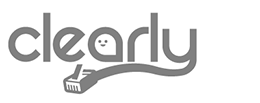SaaS stands for Software as a Service. It is a cloud computing model where software applications are delivered over the internet as a service. Instead of installing and maintaining software on individual computers or servers, users access and use the software through a web browser or a dedicated application interface.
Key aspects and features of Software as a Service (SaaS)
- Accessibility and Availability: SaaS applications are accessible through the internet from various devices, including computers, smartphones, and tablets. Users can access the software anytime, anywhere, as long as they have an internet connection.
- Subscription-Based Model: SaaS operates on a subscription-based pricing model. Users pay a recurring fee, typically on a monthly or annual basis, to access and use the software. The subscription fee covers the licensing, maintenance, updates, and support for the software.
- Multi-Tenancy: SaaS applications are designed to serve multiple users or organizations from a shared infrastructure. Each user or tenant accesses the software while maintaining their data and settings separate and secure from other users.
- Automatic Updates and Maintenance: With SaaS, the software provider is responsible for software updates, maintenance, and security patches. Users do not need to worry about installing updates or managing server infrastructure, as these tasks are handled by the provider.
- Scalability and Flexibility: SaaS applications can scale easily to accommodate the changing needs of users. The provider can adjust resources, such as storage or computing power, to meet demand without disruption to the users.
- Customization and Integration: SaaS applications often allow limited customization options, such as user interface branding or configuration settings. Additionally, they may offer integration capabilities with other software or services to enhance functionality and workflow.
- Centralized Data Storage: SaaS applications typically store user data in a centralized location or cloud-based server. This enables seamless collaboration, data synchronization, and access from multiple devices.
SaaS is widely used in various industries and for a range of applications, including customer relationship management (CRM), project management, human resources management, enterprise resource planning (ERP), collaboration tools, and more. It offers cost-effectiveness, scalability, accessibility, and ease of use, making it a popular choice for businesses and individuals looking for software solutions without the need for extensive infrastructure and maintenance.

